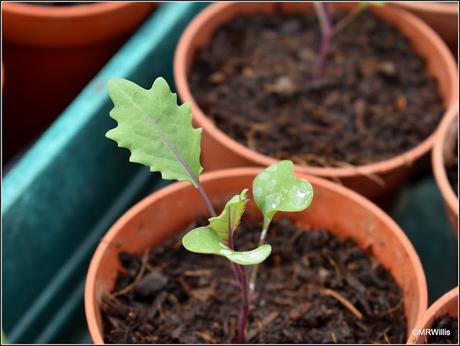
Kohlrabi "Kolibri F1"
Some of my seeds (e.g. carrots and parsnips) are sown directly into the raised beds, but I also like to raise a lot of my plants in small pots or modules, and transplant them later on. This means that I can protect them more easily from adverse weather. As I write this, my garden is full of little plants in pots, and naturally this means I can get them indoors or under cover if I need to do so.
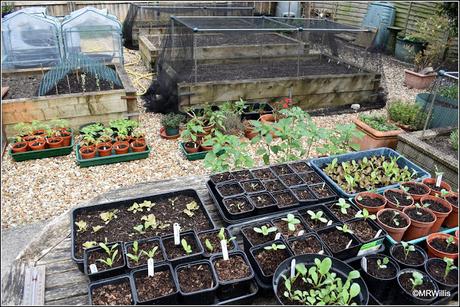
I've written recently about my chillis and tomatoes, but in addition to those I have lots of other plants coming along too, such as Broccoli, Cabbage, Brussels Sprouts, Kohlrabi, Rocket, Lettuce and Beetroot.
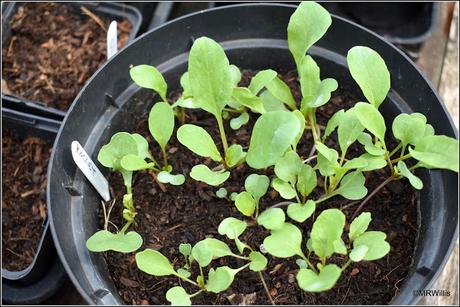
Rocket
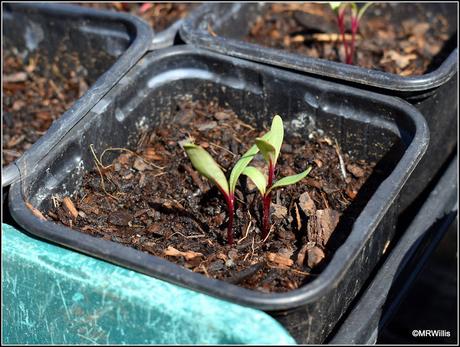
Beetroot "Crosby's Egyptian"
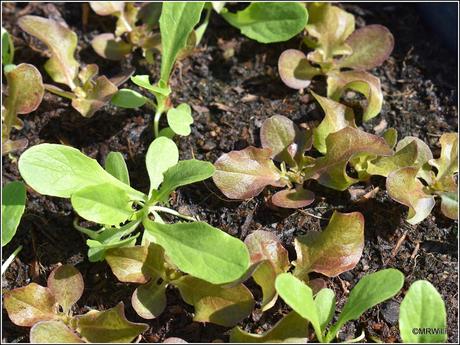
Lettuce "Lobjoit's Green Cos" and "Saxo"
This year I'm making a special effort to keep my garden colourful, so I have sown seeds for Lupins, Calendulas, Marigolds and two types of Sunflower. The Marigold seeds are ones I saved from some plants I bought last year from a local Garden Centre. They were amazingly good and lasted ages, so I felt that I just had to save seeds from them (and they produced loads!). Unfortunately the germination rate of the saved seeds has been very poor - so far I only have three new plants!
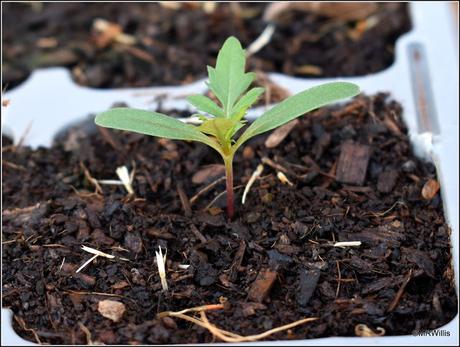
Marigold seedling
The Calendula seeds were self-saved too, taken from plants originally grown from "Flighty's Favourites" seeds kindly given to me by Mike Rogers who writes the blog Flighty's Plot.

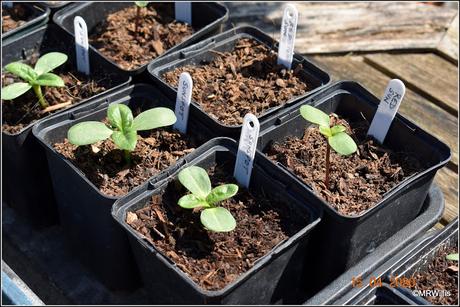
Sunflowers "Sunspot" and "Red Sun"
You'll notice that there are one or two blank spaces amongst the seedlings (see photo of sunflowers, above, for example). It's never guaranteed that all the seeds you sow will germinate, so it makes sense to sow a few more than you think you'll need. Giving away spare plants is easy enough, and in current lockdown circumstances I suspect that more people than ever will be grateful to accept any spares that you offer.
Here's a different type of seed-sowing - the "broadcast" method. I'm trying to establish a permanent supply or Parsley (a herb of which we use a lot). Alongside a fence and underneath some small fruit trees I have lots of Parsley plants, some of which are from last year, and some of those were in turn grown from plants sown the previous year. The idea is to have so many plants that I can afford to let some of them run to seed, and drop their seeds into the soil where they lie dormant until conditions are right for the next generation. You'll recall no doubt that Parsley is a biennial, i.e. it grows and is cropped in its first year and forms flowers (and therefore seeds) in its second year, so many of the plants in this photo are old ones.
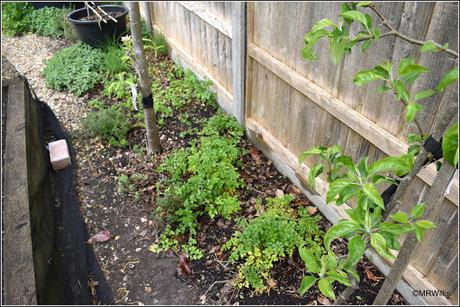
I'll confess that I was a bit impatient this year. I couldn't see any Parsley germinating, so I threw down about half a packet of new seeds, simply scattered in amongst the old plants without covering them with soil or anything - this is called "broadcast sowing" I believe. Now of course I have hundreds of tiny Parsley seedlings, and I can't tell if they are self-sown ones or ones resulting from my broadcasting!

Parsley seedlings
Conditions are good just now for sowing and growing. We had a few hours of decent rain on Friday, so the soil is moist but not wet, and now we have sunshine and a gentle breeze so the little plants are well happy!
